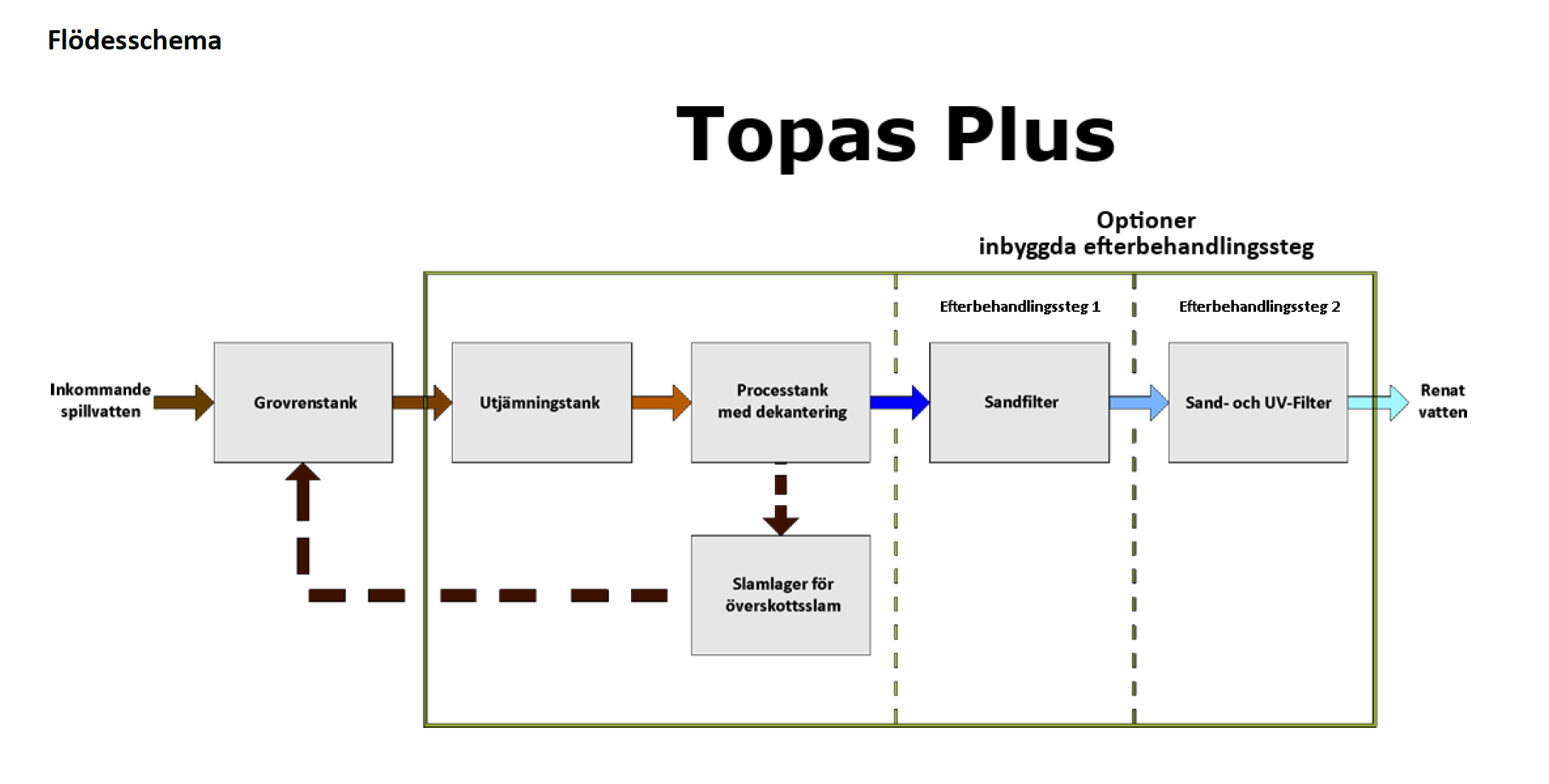Your cart is currently empty!
Topas 15 Finishing step 2, built-in sand filter + UV
Best purification result !
2.967 €
Built-in finishing
Post-treatment, sometimes called post-purification, is available as an option. These options are built into Topas treatment plants and mini-treatment plants, which makes the solution very compact. In addition, there is no need to build an infiltration bed after the treatment plant.
Post-treatment, sometimes called post-purification, is carried out to ensure hygienization of the treated water, cope with peaks of phosphorus and take care of any operational disturbances. Usually, the water is discharged through a sand bed and then infiltrated or discharged into a ditch or similar. When constructing a wastewater treatment plant, a safe way of discharging the treated water must be ensured. The local environmental authority requires that discharges with residual bacteria do not affect nearby water wells, bathing beaches or areas where people spend time. In addition, they want to protect the environment from the release of small sludge flocs and residual contaminants that a wastewater treatment plant may occasionally let through. The most common method of backwashing is created using a soil filter, such as a small infiltration or equivalent soil bed.
When there is no space for a soil filter, we can offer various technical solutions for post-purification.
Sand filter
The first post-treatment stage filters the treated water from the decanter through a sand filter. Here, small biological flocs and precipitated phosphorus are captured, which do not have time to sink in the sedimentation phase. After this step, the water will have BOD less than 10 mg/l and phosphorus less than 0.5 mg/l. The sand filter is self-cleaning by aeration and what is filtered out here is flushed back to the equalization tank.
UV filter
As an additional option, you can choose to UV-irradiate the water. The purified water is passed through a UV tube after the sand filter, if applicable, before leaving the treatment plant. This is normally done to combat viruses and bacteria in drinking water. This is also built into the treatment plant.
Note that these options replace soil filters and allow the treatment plant to discharge water with bathing water quality. When close to water wells, the water should be led to a ditch for mixing. Topas recommends a simple spreading bed after the treatment plant.
No files available.
Built-in finishing
Post-treatment, sometimes called post-purification, is available as an option. These options are built into Topas treatment plants and mini-treatment plants, which makes the solution very compact. In addition, there is no need to build an infiltration bed after the treatment plant.
Post-treatment, sometimes called post-purification, is carried out to ensure hygienization of the treated water, cope with peaks of phosphorus and take care of any operational disturbances. Usually, the water is discharged through a sand bed and then infiltrated or discharged into a ditch or similar. When constructing a wastewater treatment plant, a safe way of discharging the treated water must be ensured. The local environmental authority requires that discharges with residual bacteria do not affect nearby water wells, bathing beaches or areas where people spend time. In addition, they want to protect the environment from the release of small sludge flocs and residual contaminants that a wastewater treatment plant may occasionally let through. The most common method of backwashing is created using a soil filter, such as a small infiltration or equivalent soil bed.
When there is no space for a soil filter, we can offer various technical solutions for post-purification.
Sand filter
The first post-treatment stage filters the treated water from the decanter through a sand filter. Here, small biological flocs and precipitated phosphorus are captured, which do not have time to sink in the sedimentation phase. After this step, the water will have BOD less than 10 mg/l and phosphorus less than 0.5 mg/l. The sand filter is self-cleaning by aeration and what is filtered out here is flushed back to the equalization tank.
UV filter
As an additional option, you can choose to UV-irradiate the water. The purified water is passed through a UV tube after the sand filter, if applicable, before leaving the treatment plant. This is normally done to combat viruses and bacteria in drinking water. This is also built into the treatment plant.
Note that these options replace soil filters and allow the treatment plant to discharge water with bathing water quality. When close to water wells, the water should be led to a ditch for mixing. Topas recommends a simple spreading bed after the treatment plant.
No files available.




